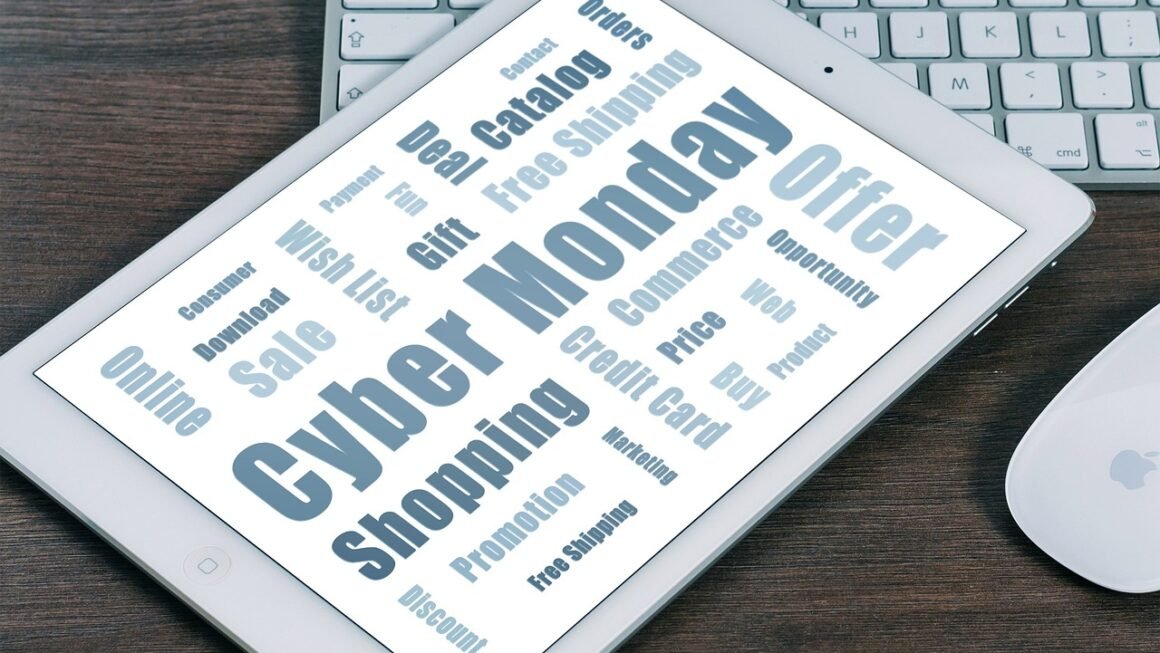Mobile commerce, or m-commerce, has revolutionized the way we shop, bank, and consume services. No longer tethered to desktops or even laptops, consumers can now engage in transactions anytime, anywhere, using their smartphones and tablets. This shift has created immense opportunities for businesses, demanding a strategic adaptation to capture this ever-growing mobile market. This blog post will delve into the intricacies of mobile commerce, exploring its benefits, key strategies, and future trends.
What is Mobile Commerce?
Defining Mobile Commerce
Mobile commerce encompasses any financial transaction conducted via a wireless handheld device such as a smartphone or tablet. It’s more than just online shopping on a smaller screen; it involves a whole ecosystem of mobile-optimized experiences designed for convenience and immediacy.
- Examples of M-commerce Activities:
Purchasing goods and services online.
Mobile banking and financial transactions.
Paying bills via mobile apps.
Making reservations (restaurants, hotels, etc.).
Digital content purchases (music, e-books, apps).
Mobile ticketing (concerts, transportation).
In-app purchases within mobile games and applications.
How M-Commerce Differs from E-Commerce
While both e-commerce and m-commerce involve online transactions, several key differences set them apart:
- Device: E-commerce primarily relies on desktop computers, while m-commerce is driven by mobile devices.
- Accessibility: M-commerce offers unparalleled accessibility, allowing users to shop on the go.
- User Experience: M-commerce emphasizes mobile-optimized websites and apps, focusing on touch-based navigation and streamlined checkouts.
- Location-Based Services: M-commerce leverages location data for personalized offers and targeted advertising.
- Mobile Payment Options: M-commerce often includes mobile payment options like Apple Pay, Google Pay, and Samsung Pay.
The Benefits of Embracing Mobile Commerce
Reaching a Wider Audience
Mobile devices have become ubiquitous, making mobile commerce a powerful tool for reaching a vast and diverse customer base. According to Statista, mobile devices account for a significant percentage of global e-commerce sales, highlighting the importance of a mobile-first strategy.
Enhanced Customer Experience
Mobile commerce offers a more convenient and personalized shopping experience:
- Personalized Recommendations: Using data analytics, businesses can offer tailored product recommendations based on browsing history and past purchases.
- Push Notifications: Timely notifications about sales, promotions, and order updates can keep customers engaged.
- Mobile Wallets: Streamlined checkout processes through mobile wallets reduce friction and encourage conversions.
- 24/7 Availability: Customers can browse and purchase products anytime, anywhere.
Increased Sales and Revenue
A well-executed mobile commerce strategy can significantly boost sales and revenue. Faster loading times, simplified navigation, and secure payment options can drive conversions and increase average order value.
Improved Brand Engagement
Mobile apps and mobile-optimized websites offer opportunities for stronger brand engagement. Interactive content, loyalty programs, and social media integration can foster customer loyalty and advocacy.
Key Strategies for Successful Mobile Commerce
Mobile-First Website Design
Having a responsive website that adapts to different screen sizes is crucial. A mobile-first design approach prioritizes the mobile experience, ensuring that the site is fast, easy to navigate, and visually appealing on smartphones and tablets.
- Optimize for Speed: Mobile users expect fast loading times. Use tools like Google PageSpeed Insights to identify and fix performance bottlenecks.
- Simplify Navigation: Use clear and concise menus, search functionality, and intuitive navigation patterns.
- Use Large, Touch-Friendly Buttons: Make it easy for users to tap buttons and links on smaller screens.
- Compress Images: Reduce image file sizes to improve page loading speed.
- Prioritize Key Content: Ensure that essential information is easily accessible on mobile devices.
Developing a Mobile App
While a mobile-optimized website is essential, a dedicated mobile app can offer a more engaging and personalized experience.
- Benefits of a Mobile App:
Enhanced User Experience: Native apps can provide a smoother and faster experience than mobile websites.
Push Notifications: Apps can send targeted push notifications to keep users informed and engaged.
Offline Access: Apps can allow users to access certain content and features even without an internet connection.
Loyalty Programs: Apps can integrate with loyalty programs to reward frequent customers.
Location-Based Services: Apps can use location data to provide personalized offers and recommendations.
Optimizing the Mobile Checkout Process
A streamlined and secure checkout process is critical for converting mobile shoppers.
- Simplify the Checkout Form: Minimize the number of fields required to complete the purchase.
- Offer Guest Checkout: Allow users to purchase without creating an account.
- Provide Multiple Payment Options: Accept credit cards, debit cards, mobile wallets (Apple Pay, Google Pay, Samsung Pay), and other popular payment methods.
- Use Secure Payment Gateways: Ensure that payment transactions are protected by encryption and fraud prevention measures.
- Display Clear Shipping and Return Policies: Make it easy for customers to understand your shipping and return policies.
Mobile Marketing Strategies
Effective mobile marketing is essential for driving traffic to your mobile website or app.
- Mobile SEO: Optimize your website for mobile search engines by using relevant keywords and ensuring that your site is mobile-friendly.
- SMS Marketing: Send text message promotions and alerts to subscribers.
- Mobile Advertising: Utilize mobile advertising platforms like Google Ads and social media ads to target mobile users.
- Location-Based Marketing: Leverage location data to target customers with personalized offers based on their location.
- Social Media Marketing: Engage with customers on social media platforms like Facebook, Instagram, and Twitter.
The Future of Mobile Commerce
Augmented Reality (AR) and Virtual Reality (VR)
AR and VR technologies are poised to transform the mobile commerce landscape. AR can allow customers to virtually try on clothes or visualize furniture in their homes before making a purchase. VR can create immersive shopping experiences that simulate a physical store.
Artificial Intelligence (AI) and Chatbots
AI-powered chatbots can provide personalized customer service, answer questions, and guide users through the purchase process. AI can also be used to analyze customer data and provide personalized product recommendations.
Voice Commerce
Voice commerce, facilitated by voice assistants like Siri and Alexa, is gaining traction. Consumers can use voice commands to search for products, place orders, and track shipments.
Mobile Payments Innovation
The mobile payments landscape is constantly evolving. New payment technologies, such as blockchain-based payments and biometric authentication, are emerging to enhance security and convenience.
Conclusion
Mobile commerce is no longer a trend; it’s a necessity for businesses looking to thrive in the digital age. By embracing a mobile-first strategy, optimizing the mobile experience, and leveraging the latest technologies, businesses can unlock new opportunities for growth and engagement. The future of commerce is undoubtedly mobile, and those who adapt will be best positioned for success. By focusing on customer convenience, personalization, and secure transactions, businesses can build lasting relationships with mobile shoppers and drive sustainable growth.



